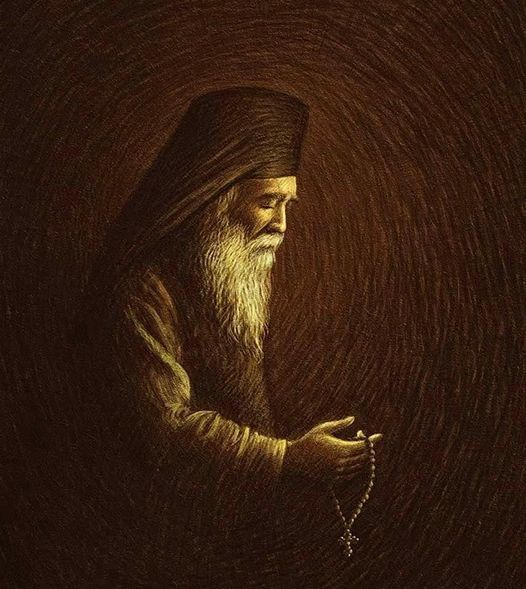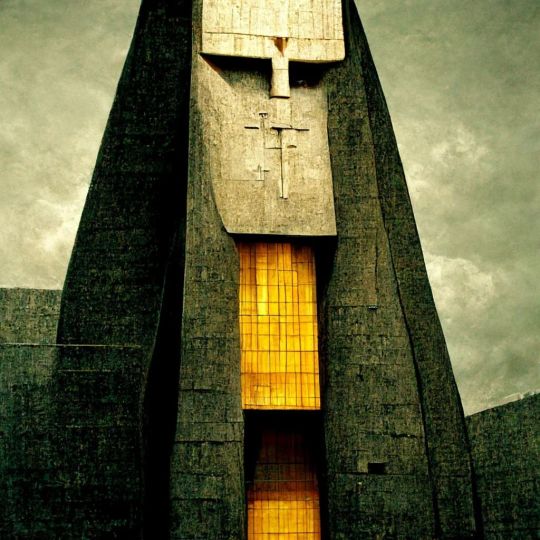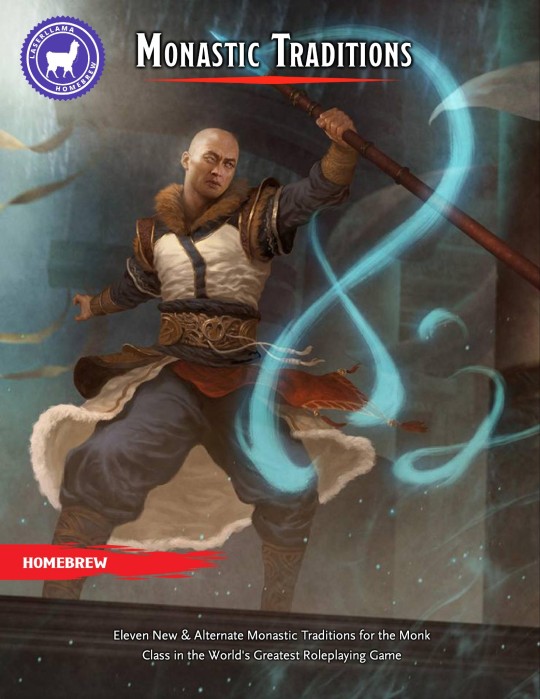#monastic
Text

“Silence is precious; by keeping silence and knowing how to listen to God, the soul grows in wisdom and God teaches it what it cannot learn from men.”
~ Blessed Anne of St. Bartholomew, O.C.D. (1550-1626)
(Image via facebook)
50 notes
·
View notes
Text

91 notes
·
View notes
Text

Dancing in a Monastic Brothel, c. 1932
Photo: Brassaï
83 notes
·
View notes
Text
Book Review of 'Polytheistic Monasticism: Voices from Pagan Cloisters'

I wasn't entirely sure what I was expecting when I picked up this book but... generally I was expecting... more.
I don't feel like I learned much from reading this book, aside from prehaps that (unsurprisingly) those being called to deeper devotional practices in the Pagan/Polytheistic world are mostly being offered options based firmly in Western traditions. While I was sure that inspiration for such a movement would draw from monastic Christian traditions I had hoped to see it also drawing from antiquities temple traditions and, more modern, Eastern traditions where temples for worship are often maintained by monks/nuns and in this way monistaries and temples are one in the same.
Aside from getting a feel for the current climate and areas of inspiration that seem to be present inside this community... I don't feel like I learned... much of anything... most of the essays felt... a bit like advertisements to me... and most didn't feel particularly helpful to one interested in the path or particularly insightful in anyway.
To be honest this felt like a book that was created mearly to mark the phenomenon and offer a screenshot of it for the purposes of third-party study as opposed to a tool for someone genuinely seeking information about what this kind of calling might look like in their own lives.
#book review#books#pagan#polytheism#eclectic#Monasticism#monastic life#monastic#Polytheistic Monasticism#Jann Munin#blackcrowing
7 notes
·
View notes
Text

Opactwo Cystersów, Kraków.
Instagram/anna.slapek/
#polish church#poland#monastic#roman catholic#catholic church#catholic art#christianitas#old church#silent#catholic faith
50 notes
·
View notes
Photo

Today we celebrate the Venerable Benedict of Nursia, the founder of Western Monasticism. At the age of fourteen, Benedict was unsettled by the life of sin of the society around him that he decided to devote himself to the monastic life. He eventually began his own monastery where he developed his own monastic rule which has been passed down from generation to generation and is still practiced today by the Western Benedictine monasteries. This rule he believed to be a way of attaining perfection, or Theosis in this earthly life. Having lived a life of purity and prayer, the Lord granted him the gifts of wonderworking and prophesy before his peaceful repose. May he intercede for us always + #saint #benedict #stbenedict #benedictus #nursia #italy #rome #monk #monastic #monasticrule #rule #west #western #westernmonastery #monastery #prayer #faith #love #orthodox #saintoftheday (at Monte Cassino) https://www.instagram.com/p/Cpvo5lUDebr/?igshid=NGJjMDIxMWI=
#saint#benedict#stbenedict#benedictus#nursia#italy#rome#monk#monastic#monasticrule#rule#west#western#westernmonastery#monastery#prayer#faith#love#orthodox#saintoftheday
27 notes
·
View notes
Photo

monastery (2022) #tidalgrace #berlinartist #montrealartist #malagaartist #artberlin #contemporaryart #socialcommentary #art #visualart #modernart #digitalart #christianity #monastic #brutalism (at Montreal, Quebec) https://www.instagram.com/p/CfUGLfyrYUO/?igshid=NGJjMDIxMWI=
#tidalgrace#berlinartist#montrealartist#malagaartist#artberlin#contemporaryart#socialcommentary#art#visualart#modernart#digitalart#christianity#monastic#brutalism
42 notes
·
View notes
Photo

" . . .God wishes to make you holy. Be humble of heart and continue your prayer in God, the prayer God gives you . . . Die that mystical death to all that is not God . . . You ought not to be living in yourself, but in God. Jesus lives in you and you in Jesus.”
~St. Paul of the Cross
(Image via facebook)
#Orthodox Christian#saints#St. Paul of the Cross#monastic#holiness#humility#prayer#God#die a mystical death#deny self#live in God#Lord Jesus Christ lives
124 notes
·
View notes
Text

83 notes
·
View notes
Text
Monastic Traditions by Laser Llama








#laser llama#monastic#traditions#monkish#monks#monk#class#classes#expanded#expansion#revised#revisions#elemental#elements#updated
3 notes
·
View notes
Text
Geghard Monastery, Unesco World Heritage Site in central Armenia

2 notes
·
View notes
Text
Transcendence of Enshrined Form and the Grave of Initiation
It’s always interesting to me when folks show surprise (or, occasionally, utter shock) at my speaking in terms that point through the transitory nature of religious convention. Recently this arose with a new student, and I subsequently reflected on it in light of my solemn monastic profession. For those who are unfamiliar with that rite in Catholic Christian tradition, it is the final vows that monastics make, often referred to as ‘life vows’. A universal and prominent component of this rite is a ceremonial death-and-burial, in which the candidate for solemn vows lies in full prostration on the ground, is completely covered with a large black funerary shroud and left there for a portion of the ceremony, while the Liturgy goes on without him or her.
In my own experience of this, one of my monastic students, Br. Aidan, placed a traditional Scottish tartan over my body, symbolizing my ancestral inheritance; then an old Eastern Orthodox funeral shroud printed with an icon of the crucifixion (very similar to what is depicted on the ‘Great Schema’ of some Orthodox monastic Elders), which was gifted to me and our community years ago by a dear former seminary professor; and finally the black funeral shroud. Those first two layers were dearly held things that were in one sense an integral part of my ritual death, but at the same time things that, because they were so dearly held, I knew I also had to die to in that process. The essential symbolism of this act of ritual burial is that the monastic is finally, sacramentally, then and there, once and for all, dying to the phenomenal world and to every other possible path of experience that would otherwise be open to him or her in this lifetime.
In my understanding,—and I’m confident this reflects the understanding of the ancient tradition, too—the fully vowed monastic is, if nothing else, one who is fully immersed in the process of dying absolutely to the false construct of ‘self’, as well as to every phenomenal, worldly attachment, in order to enter non-dual union with the Divine Ground. Obviously, undergoing the symbolic sacramental rituals of a rite like Solemn Profession does not magically make it so—: they don’t suddenly bring one to full awakening in non-dual awareness; rather, the outward dimensions of the rite further the depth of the process toward awakening that has been unfolding throughout many years of previous formation, ascetical and contemplative practice. They also ‘energetically’ close doors that might otherwise have remained open, narrowing one’s focus even further on the authentic aim of the monastic (and, in this case, the contemplative) life.
When I was ordained a Buddhist monk in 2003, the same essential feeling was impressed upon me: a ‘dying’ in pursuit of total freedom by means of renunciation—: real renunciation, which is not a rejection of anything, but a seeing through all things, and a releasing of one’s delusional grasping at phenomena. This is a recurring theme of what might be called the ‘perennial wisdom tradition’.
Fully entering a life of renunciation means inwardly dying to all concepts—about anything and everything, including God, metaphysical dogmas, and all the other elements of cultural-religious convention. Why? Because one has discovered (or must come to discover), in dying to ‘self’ and all phenomena, that all such things are contrivances of the human mind, cultural constructs, and they are not God, or even adequate representations of the ineffable Mystery we point to with that term. As St. Eckhart reminds us, we will have to eventually die to God as well—that is, to all our concepts about God—since we know for certain that nothing we can say about that eternal Mystery is actually true, and no image, idea, belief, or conditioned experience can truly reflect it. (This is also beautifully laid out in St. Dionysius’s treatise, Mystical Theology.) Hence, the jñāna yogīs of Vedāntic tradition commit to perpetually cutting through all thoughts and appearances with the sword of discernment, saying with everything: neti, neti: ‘not this, not this’. Nothing that’s created or conditioned can be the Mystery we’re seeking.
One who has gone down to the grave and touched the depths of self-surrender has effectively died to everything. There’s no holding certain things back or choosing ‘favorite pets’ as exceptions to the rule; that would only mean more attachments and thus more distractions from what is ultimate, from what ancient Hermetists sometimes called the One Thing. This invokes for me a motif found frequently in the sayings of the Desert Mothers and Fathers about not keeping back even a little bit of money in one’s cell as a ‘safety net’. Holding on even to one little thing is not full surrender. (In the present context, the monetary dimension of the motif is metaphorical, of course, pointing to the holding back of certain select attachments, favored ideational constructs, beliefs: whatever we want to continue to imagine can give us ‘security’.) That kind of subtle, devious jockeying against the authentic aim of illumination or awakening only reifies the false duality of the state of delusion and needless suffering—what Hindus and Buddhists call samsāra. Therefore, nothing can be carried over into contemplative life from the life of attachment to phenomena: no contrivance of mind, nothing framed by human thought. And this unequivocally includes even the most ‘sacred’ thoughts and personally prized religious ideations, which are, at the end of the day, still just made of thought—and thought itself isn’t made of anything at all.
There should be no surprise, then, when those of us who have thusly died—not just ceremonially, but in actuality, in the way we live and speak—teach or otherwise express ourselves in language and behavior that reflects the fact of that kenosis. A perennial hope of monasticism in the great religious traditions—and of many non-monastic schools of mystical training as well—is that the sharing of the fruits of this emptying would be for others not a source of fear and unwelcome destabilization, but rather an inspiring witness, to help in some small way in the universal project of apokatástasis, or, in Buddhist terms, bringing all sentient beings to enlightenment, to realization of their own true nature. Without the compassionate intention to create the conditions where that might be so, probably none of us would bother to teach or even remain much in contact with ‘the world’ at all.
Those who say ‘yes’ to this path of emptying—which is to say, legitimate contemplatives of any variety—will have to progressively shed more and more attachments, until finally nothing remains but that which was never created and never dies, cannot be spoken, and cannot be thought.
So, my friends, a humble invitation: Don’t be shocked by speech or actions from such persons that doesn’t conform to the normative, mainline doctrine of the particular religious context(s) in which they happen to presently reside. Moving beyond those constraints is an expected and hoped for stage of the path toward perfect freedom. There is a golden thread of wisdom running through many of the world’s religious traditions, the essence of which is transcendent of each and all of those traditions. This may be new information for you, and it may threaten some of your dearly held assumptions about reality—and that’s okay. I would simply encourage you to sit with that, explore it further, and be open, rather than rigidify and resist. And it’s sometimes useful also to recall that, whether we want to acknowledge it or not, all of the things we hold most dear are constantly moving, rapidly changing, conditional, and always provisional. This includes, of course, all the culturally constructed artifices of religion we like to imagine are somehow trans-human, magically pure and unaffected by the conditioned vicissitudes of phenomenal existence.
Once upon a time I had a Pāli saying of the Buddha, rendered in Devanāgarī, tattooed on my arm—well, technically I still do, but because the lettering had been put on too small (I was young and didn’t yet know enough about tattooing), it now lives underneath a Pictish motif. This saying is still very significant for me, and I think of it often. It translates roughly to: ‘All conditioned things are impermanent, subject to rise and fall. Once they arise, they must cease. And their stilling is bliss.’ I think that just about summarizes the situation perfectly.
Along the way, provisional reality must have its day, of course, and it must be embraced to the extent that it helps us (somewhat paradoxically) to eventually let go of it. In the realm of the relative, we still need to strive for the goal, we still need self-discipline, we have to have some structure or pattern of life, we need some legitimate wisdom teachings to follow, and, above all, we must practice. But we do well, firstly, to adopt those provisional forms that actually help us rather than hinder us by weighing us down with needless, extraneous dogmas or unhelpful thought-forms; and, secondly, whatever we do embrace and utilize, we do well to simultaneously know it as utterly transparent and ephemeral. Not this, not this…
And if in your travels you happen to hear something that has in it the harmonious notes of wisdom, but challenges your beliefs and assumptions, I encourage you to listen—to listen with the ear of the heart.
Fr. Brendan+ (Ngakpa Palden Dorje)
#fatherbrendan#brendanelliswilliams#spirituality#spiritualjourney#spirituallife#spiritualawakening#awakening#nonduality#theology#mysticism#christianmysticism#buddhism#interfaith#Interreligious#priest#monastic#monasticism#initiation#spiritualdirector#teacher#author#spiritualdirection#perennialwisdom#Insight#inspiration#depth#religiousstudies#kenosis#contemplative#contemplation
6 notes
·
View notes
Text

Opactwo Cystersów w Mogile, Kraków, Polska.
instagram.com/anna.slapek/
#poland#Lent#catholic#monastic#monastic life#cross#catholic art#silent#meditation#christianity#old church
12 notes
·
View notes
Photo

Today we also celebrate the Righteous Melangell the Abbess of Wales. Saint Melangell was born of royal Welsh lineage and was thus expected to marry. Yearning for the life of prayer and solitude, Melangell renounced her royal status and fled for Ireland in around 590AD and settled in an isolated area where she would sleep on bare rock with a cave as her cell. She remained hidden her for almost fifteen years. One day, as the Welsh Prince Brochfael Ysgithrog was hunting in the area, his hounds found a hare which they pursued with the intent of killing it. The hare ran through a bush and the Prince followed it. He then unexpectedly found the Hermitess Melangell in such deep prayer that she remained undistracted by the commotion happening around her. The breathless hare had found refuge in the folds of Melangell’s garment. When the Prince’s ordered his hounds to snatch the hare, the hounds dared not approach the Saint. Now aware of what was happening, Melangell calmly, but boldly, drove the dogs back. The Prince had never seen such a thing before and was in utter amazement. He cautiously approached the hermitess and asked to hear her life story. Deeply moved by the Saint, the Prince marvelled at Melangell’s beauty, purity, and love for God. Nevertheless, he suggested that she leave her solitude and marry him. She gently but adamantly refused, and the Prince was so impressed with her sanctity and determination that he donated a parcel of land on which she would found her monastery. This monastery became a refuge not only for animals, but for all people who came to Melangell to be comforted by her words. Saint Melangell lived for almost forty years in her monastery guiding and counselling all who came to her. During her life, no animal was ever killed on her land, and for centuries after, those who live in the area do not dare to hurt any hares as they are regarded to be protected by the Saint. Saint Melangell is considered the Patron Saint of hares and other small animals and performs miralces for those who come to her with faith. May she intercede for us always + #saint #melangell #ireland #wales #hermitess #monastic #anchoress #God #love #prayer #orthodox (at Newcastle, Powys, United Kingdom) https://www.instagram.com/p/CoDexdth4en/?igshid=NGJjMDIxMWI=
47 notes
·
View notes
Text
On Renunciation, Ruses, and Reality
More often than not renunciation is but a ruse, a smokescreen erected by those who have no choice left in their psyche but to hide in plain sight from the transparency demanded of intimacy. The spirituality of intimacy, which is plainly open to all things (and they to it) is one that requires no small amount of courage.
Renunciation is in essence a commitment to casting away the world as if one were somehow distinct from it. An attractive ideal to the ego who still believes, which is to say, who lusts after the notion that reality could be somehow other than it is. It’s an escapist urge that serves to distract the seeker from the sought which is somehow too difficult to face.
True cultivation avoids nothing, it grows and matures where it is, weathering the unfurling moment with open eyes. This isn’t to turn from virtue to vice, nor to obscure reality by covering oneself in things- commitments, debts, and stuff of all sorts. It is, however, to truly don one’s life already in progress, finding it as the truest habit, and the vest most ready suited for surrendering to the realities of being, liberated and unbounded as they’ve always been.
It is high time not only to move from worship to wonder, but also from turning away to leaning in, letting the self dissolve into its true form rather than trying to extricate it from that same state. Who is it, after all, that could be rendered distinct from themselves, and where is it that they could be delivered unto but the eternal fabric of reality, already everywhere present?
~Sunyananda

#zen#buddhism#buddha#buddhist#dharma#enlightenment#sangha#awakening#nirvana#spirituality#renunciation#monk#monasticism#monastic#religion#religious#sramana
2 notes
·
View notes

